I want Dolby Atmos!
Let's figure out what's what.
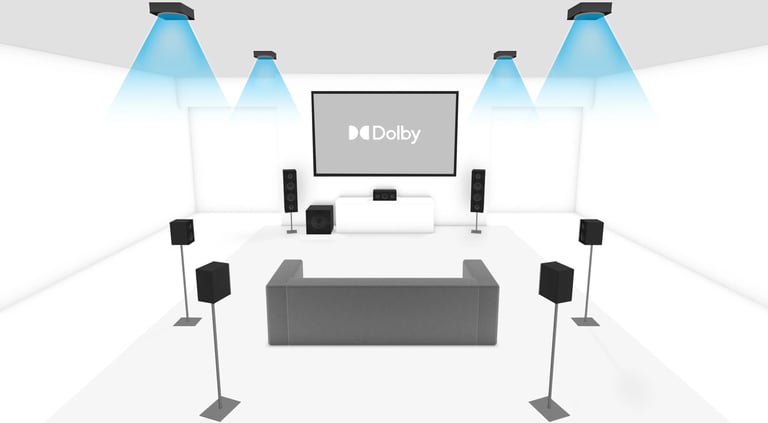

Dolby Atmos in simple words.
The sound producer in his studio places sounds and their movements at exact points in the space around the viewer. Dolby Atmos technology can produce up to 118 simultaneous sound objects. And it supports up to 400 speakers.
The AV Receiver in your Home Theater applies this positioning, using those speakers that are in your system, regardless of their number.
Of course, the more speakers there are around you, the more accurate the placement and movement of the sound will be, the more immersive you will be in what is happening on the screen.

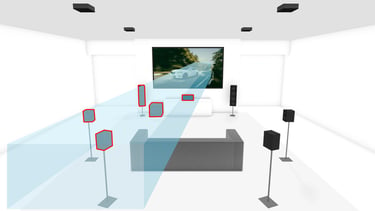
Most modern AV Receivers support Dolby Atmos, so the choice is up to the number of speakers around you and the quality of the sound itself.
The leaders of the Home Cinema AV receiver market are Denon and Marantz. This equipment has been tested for operation and works well without issues.
And since the AV Receiver is the heart of the Home Theater system, and it does a lot of work, reliability is the main parameter for a good AV Receiver.
The picture shows an example of how the sound movement can be conceived and which speakers will be used by the system. Other speakers can also add some sound for better positioning.
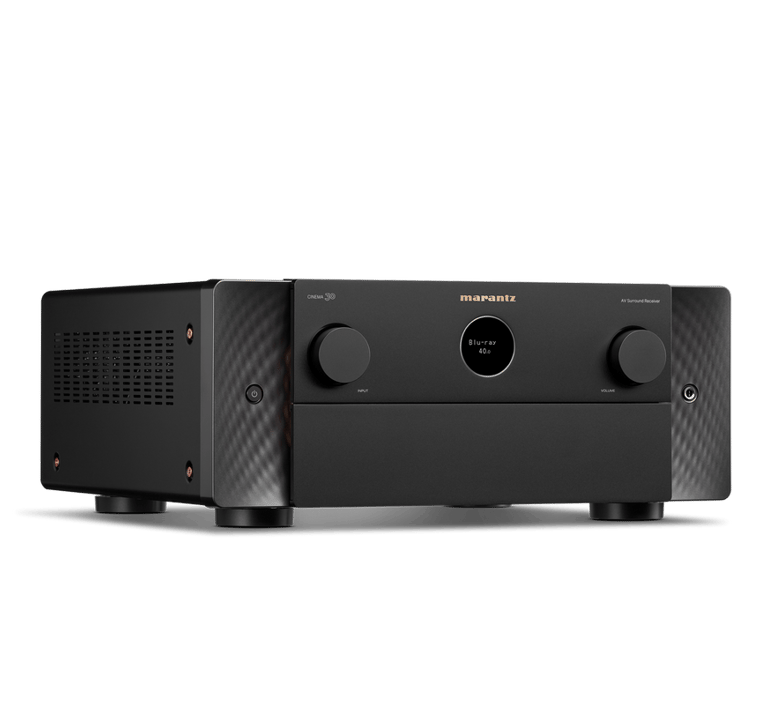

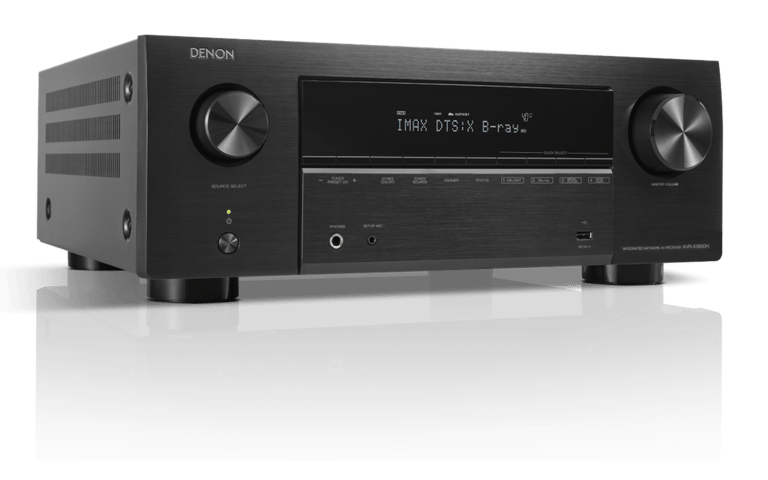

Lets look at an example of a good Dolby Atmos setup.
This could be a set up for Living room, Game room or separate room for a Home Theatre.
We need:
1. AV Receiver/Processor
2. Speakers
3. Source
I would initially take on the 7.1.4 system. This looks like a good Dolby Atmos system that will bring a lot of fun.
Seven speakers around you, four on the ceiling and one or two subwoofers.
You can start with 5.1.2. This will be a pretty good system too with it's subsequent improvement.
So, FIRST we need to choose an AV Receiver. It should be 11 ( 7+4) amplified channels.
And my leaders are:
Denon AVR-X6800H
11 channels amp
$3499
Marantz CINEMA30
11 channels amp
$4500
Here is the quote from a comparison of these AV Receivers on Whathifi.com
"Much like the Denon, it is rich and powerful with a smooth and rich sound; it also handles large-scale scenes with the necessary oomph. It's Marantz's adeptness at handling spatial sound that really wins us over though, with pinpoint directionality when it comes to vocals and larger effects alike.
The Cinema 30 also excels dynamically, with everything from the brash, metal-crunching crashes of Mad Max: Fury Road to the whisper-quiet ambushes that explode into all-out battle in Dune Part Two being handled with masterful dynamism. It also happens to be more musical than the Denon too, with a controlled yet delicate and considered performance that nails timing and isn't afraid to up the pace where required.
Simply put, the Marantz steals the Denon's thunder, and while they're both five-star performers, we have to give it to the Marantz on sound quality alone."
There are other suitable options that are cheaper, but i don't know how durable they are.
Yamaha AVENTAGE RX-A8A
11 channels amp
$2500
Sony STR-AZ5000ES
11 channels amp
$2099
SECOND - speakers.
This is harder because of the variety of options we have in the market. It is better to set up one brand speakers for all the channels. Because they always have their own specific sound. Ideal scene is speakers standing on the floor or mounted on the wall. They sound much better. We can do in-ceiling/in-wall speakers, but they have less intensive sound flow.
My choice of speakers by quality level:
I. Decent sound:
Episode from SnapOne
Klipsh
Definitive Technology
Polk Audio
Elura from Wave Electronics
II. Really good sound:
Martin Logan FOUNDATION Series
KEF Q Series
III. Amazing sound:
Martin Logan MOTION XT Series
KEF R Series
7.1.4 Dolby Atmos setup


Of course, for some rooms it is impossible to install so many speakers around and on the ceiling. Here you can install speakers that use the effect of sound reflection or even a soundbar that uses the same effect.
This will give you a less clear placement of sounds in space, but will definitely fill your room with good sound.
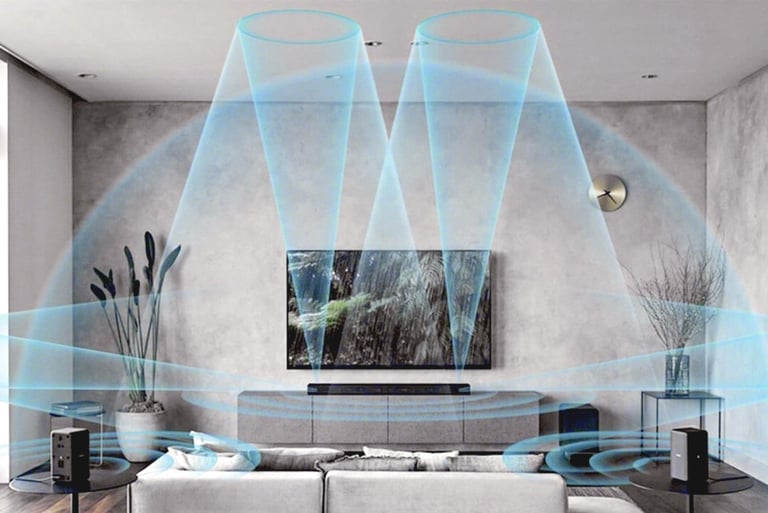


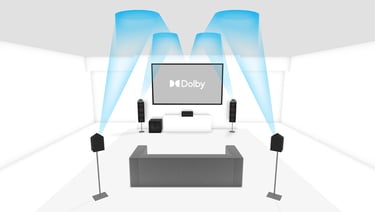
And the THIRD component is the source.
Modern TVs are a good source of good sound in themselves using your favorite streaming service application. You can also use an Apple TV or Roku player with you TV's or projector. Here is up to you to decide which interface you like best.
For the real Home Theater with lossless audio and full reference video quality you choose is definitely Kaleidescape The Ultimate Movie Platform.




